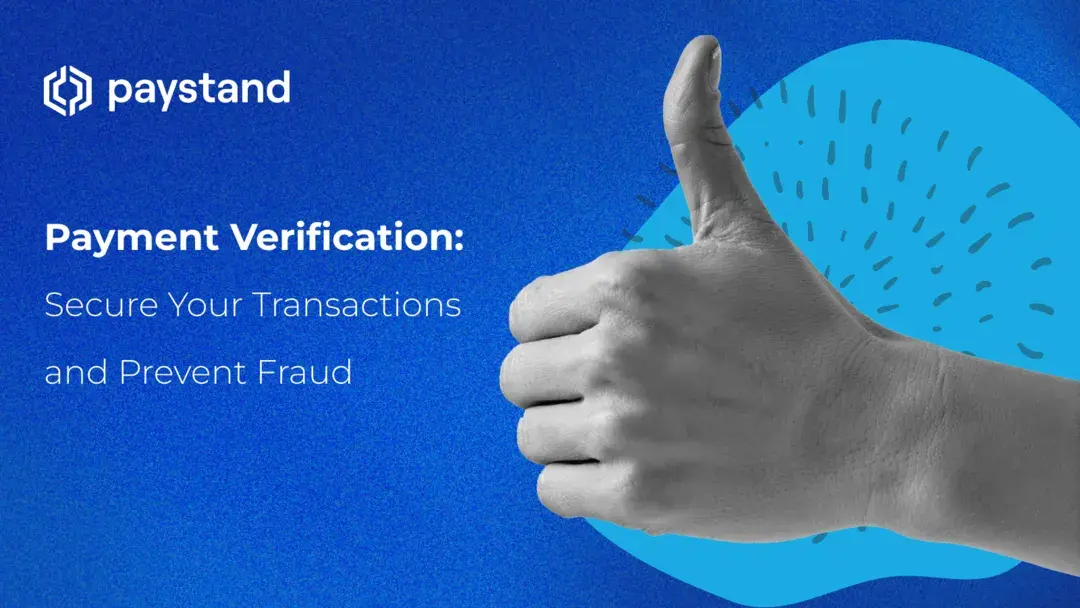Payment Verification: Secure Your Transactions and Prevent Fraud

Table of Contents
- What is a Payment Verification?
- What is the Reason for Payment Verification?
- Payment Verification Methods
- The Rise of Instant Payment Verification
- Blockchain-Enabled B2B Payments
Key Takeaways
- Payment verification is essential for preventing fraud and securing digital transactions.
- Fraud is rising, with 80% of businesses experiencing payment fraud in 2023.
- Checks are the most vulnerable payment method to fraud, yet 70% of organizations plan to continue using them.
- Payment verification processes ensure compliance, track customer account information, and protect funds.
- Instant payment verification using tokenization has revolutionized B2B payments by providing quick and secure account validation.
Payment verification is essential to prevent fraud and secure digital payments, whether you're being paid or paying someone. While you may not need to verify your client's bank accounts, having a PCI and AML portal that validates accounts helps to reduce risk and paperwork. The fact is that fraud is on the rise. The AFP reported that 80% of businesses experienced payment fraud in 2023.
Among the survey respondents, checks remain the payment method most vulnerable to fraud, with a staggering 65% rate. Despite this high rate, 70% of organizations using checks have no plans to discontinue their use within the next two years.
Verification processes help reduce potential fraud, track customer account information, and ensure compliance with regulations. However, the main purpose of payment verification is to safeguard funds and keep clear records.
What is a Payment Verification?
A payment verification is a process used to confirm a payment transaction’s authenticity and validity. It involves verifying key information related to the payment to ensure that it is legitimate and not fraudulent.
Payment Verification Process
The payment verification process typically includes the following steps:
- Payment Details Check: Payment details (amount, date, reference number) are verified against payment processor/financial institution records.
- Account Verification: Verify account ownership and good standing by checking the account holder's details.
- Fraud Detection: Fraud detection algorithms analyze transactions for suspicious patterns indicating potential fraud, considering factors like IP address, device type, and transaction history.
- Authentication Checks: Authentication checks vary based on the payment method, such as CVV or 3D Secure for credit card payments.
- Funds Availability Verification: Financial institutions verify account funds to prevent overdrafts and ensure successful payments.
- Payer Confirmation: The payer receives confirmation of successful payment after verification.
What is the Reason for Payment Verification?
Payment verification confirms that a payment has been made and that the intended recipient has received the funds. It is typically carried out by the payment processor, such as a bank or credit card company, to ensure that the transaction is legitimate and to protect both the payer and the payee from fraud.
- Fraud prevention: Payment verification prevents fraud by ensuring authorized account holders make payments with sufficient funds, reducing fraudulent activities like identity theft and unauthorized purchases.
- Risk Management: Payment verification can help businesses manage risk by identifying risky transactions. For example, a business may verify payments from new customers or customers making large purchases.
- Compliance: Payment verification helps businesses meet PCI DSS standards, protecting customer card data.
- Customer protection: Payment verification safeguards customers from fraud by confirming the authorized account holder makes the purchase.
Payment Verification Methods
There are several ways to verify payments, but most are time-consuming or expensive. Here are the top three ways people have been verifying payments for decades:
- Voided checks: Voided checks contain bank account and routing numbers and are used to verify payment options. However, with today's technology, checks are not secure, and easier payment verification methods exist, leading to their decline.
- Microdeposits: Microdeposits send small amounts to verify account activity, with amounts under $1 minimizing risk. However, the process can take 3-5 days and may incur ACH transaction costs exceeding the deposit.
- Prenotification: A prenote is a $0 ACH transfer. If it fails, the RDFI sends a Notification Of Change (NOC) that requires resolution. This usually takes about three days but can extend to four weeks. Although secure, it is time-consuming.
- Payment verification code (PVC): PVC is a system-generated code that verifies and authorizes electronic payments, preventing unauthorized transactions and fraud. It's sent to the payer's registered mobile number or email during checkout.
The Rise of Instant Payment Verification
Instant verification has taken the B2B payments world by storm. Companies like Plaid link to the bank account and confirm the account information. This process usually requires a bank login and supports most major banks. Each verification comes with a small fee.
But how does it work? The answer is simple—tokenization.
When a client enters their bank account login, the platform sends a token through the instant payment verification network. This token is used to pay the invoice and represents the bank account's routing and accounting number used to validate the account. The process takes about 10 seconds, a far cry from the typical 2-5 day waiting period for microtransactions.
Tokenization allows for more than fast payment verification. It also secures the client's data while in transit and storage.
Blockchain-Enabled B2B Payments
At Paystand, we have created a blockchain-based network that allows us to verify bank account information. Our platform covers over 90% of the US banking market and 98% of all commercial accounts.
As a result, AR teams can verify information in real time. That way, you can focus on more high-value tasks related to AR. We also watch for fraud and handle payment processing complexities.
Customers win, too. The "pay now" portal allows them to save their payment information easily and make automatic payments. They also receive receipts for each transaction.
Learn how blockchain technology can benefit businesses in our eBook about blockchain-enabled B2B payments advantages.







